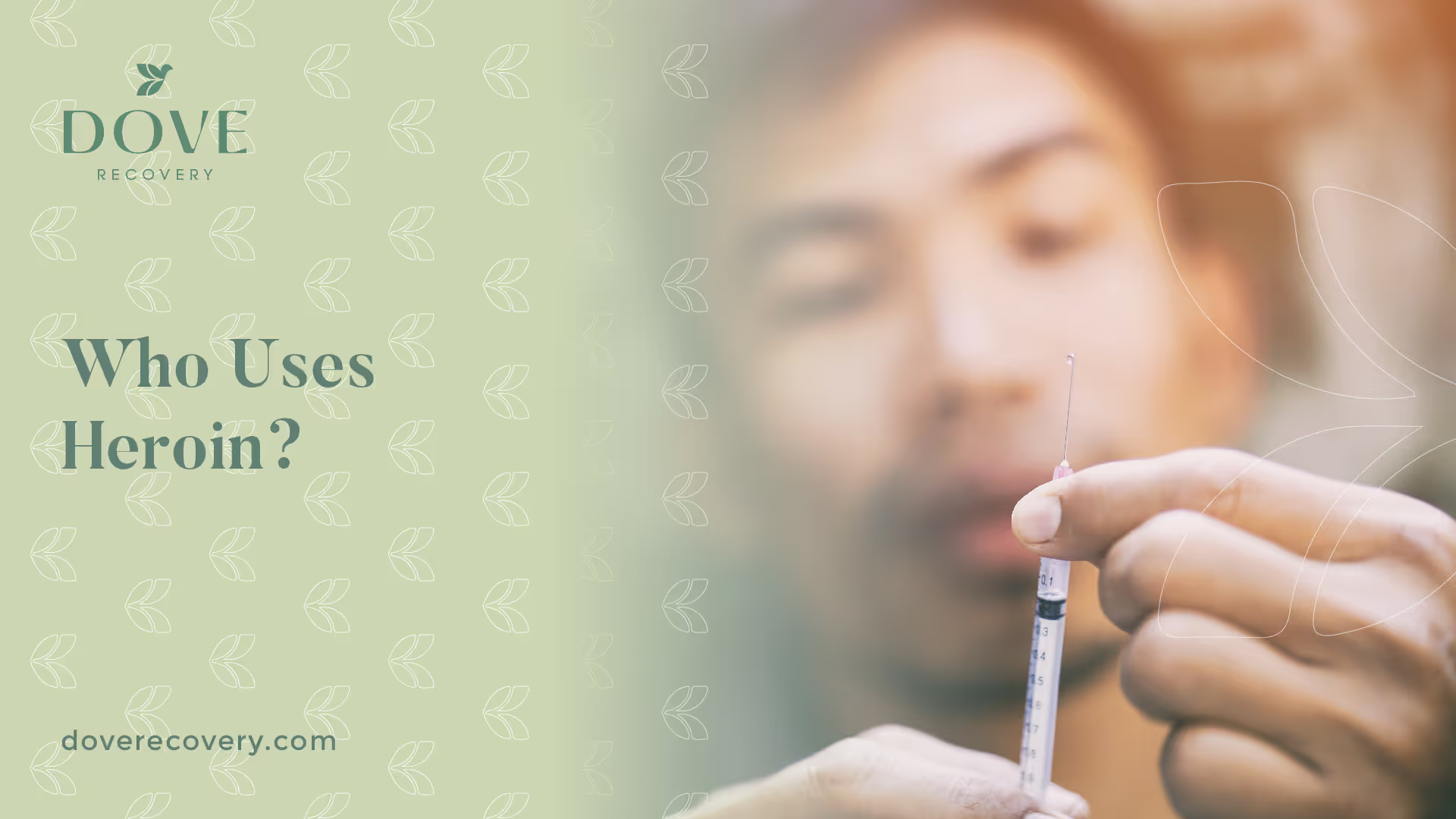39 Heroin Statistics, Facts & Death Rates

Heroin Usage Statistics
Heroin is a highly addictive drug that has been wreaking havoc in societies around the world. According to statistics, its use has been on the rise in recent years, leading to devastating consequences for those who use it, as well as their families and communities. In this article, we will take a closer look at heroin statistics, including its usage rates, impact on society, and potential solutions to the problem.
Top 10 Key Heroin Statistics
- In the United States, an estimated 745,000 people aged 12 or older had a heroin use disorder in 2019.
- Heroin-related overdose deaths have increased by over six times since 2002, with more than 81,000 drug overdose deaths reported between May 2019 and May 2020 in the US alone.
- The economic burden of heroin abuse in the US is estimated to be around $78.5 billion per year when accounting for healthcare costs, criminal justice costs, and lost productivity.
- Heroin use has been linked to a higher risk of contracting infectious diseases such as HIV/AIDS and hepatitis C due to sharing needles.
- The majority of people who try heroin report having started with prescription opioids before transitioning to heroin.
- Approximately one-third of people who use heroin will develop opioid use disorder (OUD).
- The potency of heroin has been increasing in recent years, leading to a higher risk of overdose.
- In addition to its physical effects on the body, heroin addiction can lead to social and economic consequences such as job loss and strained relationships.
- Heroin use during pregnancy can lead to complications such as premature birth and neonatal abstinence syndrome (NAS) in newborns.
- Effective treatment options for heroin addiction include medication-assisted treatment (MAT), cognitive-behavioral therapy (CBT), and support groups such as Narcotics Anonymous (NA).
Heroin Usage Rates & Statistics
The use of heroin is becoming an increasingly pervasive problem worldwide. In the United States, for example, the number of people who have used heroin has risen dramatically in recent years.
According to estimates, roughly 10.3 million Americans have used heroin at some point in their lives, and nearly 900,000 of them used it in the past year alone. This represents a significant increase from previous years, with the number of heroin users in the United States having more than doubled between 2002 and 2014.
Sadly, this trend is not limited to the United States. The United Nations Office on Drugs and Crime reports that roughly 10.6 million people worldwide used heroin within the past year. The majority of these cases occur in Asia, particularly in countries such as Iran, Pakistan, and Afghanistan.
Who Uses Heroin?

While heroin addiction can affect anyone, certain groups are at a higher risk of developing this dangerous and potentially deadly addiction. For example:
- Young adults aged between 18-25 years old are more likely to use heroin compared to older age groups. In fact, a survey conducted by the Substance Abuse and Mental Health Services Administration (SAMHSA) found that 0.8% of young adults aged between 18-25 years old reported using heroin in the past year, compared to 0.3% of adults aged 26 and older.
- Individuals who have a history of substance abuse or mental health disorders such as depression and anxiety are also at an increased risk of using heroin. According to the National Institute on Drug Abuse (NIDA), people with opioid use disorders are more likely to have other mental health conditions, and vice versa.
- People who misuse prescription opioids, such as oxycodone and hydrocodone, are also more likely to transition to heroin use. In fact, a study published in JAMA Psychiatry found that among people who used heroin for the first time in the past year, nearly 80% reported misusing prescription opioids prior to using heroin.
It's important to recognize these risk factors and take steps to address them in order to prevent individuals from developing heroin addiction. This includes increasing access to mental health services and substance abuse treatment, as well as implementing policies aimed at reducing the misuse of prescription opioids.
In What Parts of the Country is Heroin Most Prevalent?

While heroin use is a problem that affects many parts of the world, certain regions of the United States have been hit particularly hard by this epidemic. Consider the following statistics:
- According to the Centers for Disease Control and Prevention (CDC), heroin use has been increasing across all demographics and regions in recent years.
- States such as West Virginia, Ohio, and Pennsylvania have some of the highest rates of heroin use in the country. In fact, West Virginia had the highest rate of drug overdose deaths involving opioids in 2018, with a rate of 51.5 deaths per 100,000 population, followed by Ohio (46.3) and Pennsylvania (44.1).
- Other states that have seen a significant increase in heroin use include New Hampshire, Kentucky, and Rhode Island. In New Hampshire, for example, drug overdose deaths involving opioids increased from 192 in 2014 to 354 in 2017.
- Many states have implemented various policies aimed at addressing the problem of heroin addiction. For example, West Virginia has implemented a statewide substance abuse treatment program called "Help4WV," which provides access to addiction treatment services and support for individuals struggling with addiction.
It's important to recognize that while certain regions may be more affected by heroin use than others, this is a problem that affects people from all walks of life and all corners of the country. Addressing this epidemic will require a coordinated effort across multiple sectors, including healthcare, law enforcement, and public policy.
Heroin Usage by Age
Heroin use among young adults is a growing concern in the United States. Consider the following statistics:
- According to a survey conducted by the Substance Abuse and Mental Health Services Administration (SAMHSA), 0.8% of young adults aged between 18-25 years old reported using heroin in the past year, compared to 0.3% of adults aged 26 and older.
- Additionally, the Monitoring the Future study, which surveys high school students in the United States, found that 0.4% of 12th graders reported using heroin in the past year.
- The risk of developing heroin addiction is also higher for those who start using drugs at a younger age. According to the National Institute on Drug Abuse (NIDA), people who begin using drugs before the age of 18 are more likely to develop substance use disorders than those who start using drugs later in life.
These statistics highlight the importance of early intervention and prevention efforts aimed at reducing drug use among young people. This includes increasing access to education about the dangers of drug use, as well as implementing policies aimed at reducing drug availability and addressing underlying social factors that contribute to drug use among youth. By prioritizing prevention and early intervention, we can work towards reducing the number of young people who are affected by heroin addiction and other substance use disorders.
Impact on Society
The consequences of heroin use on individuals and society cannot be overstated. Those who use heroin are at significant risk of developing a range of health problems, including respiratory depression, infections, and overdose. Additionally, heroin addiction can lead to social and economic problems, such as job loss, financial difficulties, and criminal activity.
In the United States, the opioid epidemic has been fueled in part by the rise in heroin addiction. The epidemic has resulted in tens of thousands of deaths in recent years. In 2017 alone, more than 47,000 people died from opioid-related overdoses in the United States, with heroin being one of the key contributors to this number. The opioid epidemic has also had a profound impact on families and communities across the country, leading to increased rates of homelessness, poverty, and crime.
Heroin Death Rates

Heroin use has become a major public health concern in the United States and around the world, with devastating consequences. Consider the following statistics:
- According to data from the National Institute on Drug Abuse, nearly 15,000 people in the United States died from heroin overdoses in 2018 alone. This represents a staggering increase from just a decade earlier when the number of deaths due to heroin was less than half of that.
- When accounting for deaths caused by other opioids, such as fentanyl and prescription painkillers, the numbers become even more dire. In fact, roughly two-thirds of all opioid-related overdose deaths involve synthetic opioids like fentanyl.
- These death rates have had a profound impact on families and communities across the globe. For example, in Canada, there were over 16,000 opioid-related deaths between January 2016 and December 2019.
- Addressing the root causes of addiction and providing access to effective treatment options are crucial steps towards reducing these devastating statistics. For example, research has shown that medication-assisted treatment (MAT) can be highly effective in helping individuals overcome addiction to opioids like heroin.
It's clear that this is a problem that requires urgent attention and action. By increasing awareness of the dangers of heroin use and implementing evidence-based prevention and treatment strategies, we can work towards reducing the number of deaths caused by this deadly drug.
Potential Solutions
Addressing the problem of heroin addiction requires a multi-faceted approach, as there is no simple solution to this complex issue. However, there are steps that can be taken to mitigate the impact of heroin on society.
One potential solution is to increase access to effective treatment for those who are addicted to the drug. This can include medication-assisted treatment, such as methadone or buprenorphine, as well as behavioral therapies, such as cognitive-behavioral therapy or contingency management. By providing evidence-based and comprehensive care, individuals struggling with heroin addiction can receive the help and support they need to overcome their addiction.
Another potential solution is to reduce the supply of heroin on the streets. This can be done through law enforcement efforts, such as drug seizures and arrests, as well as through international cooperation to reduce the production of heroin in countries such as Afghanistan. By targeting the sources of heroin production and distribution, it may be possible to limit the availability and accessibility of this dangerous drug.
It's important to note that addressing heroin addiction requires a coordinated effort across multiple sectors, including healthcare, law enforcement, and international relations. Only through a comprehensive and collaborative approach can we hope to make meaningful progress in reducing the impact of heroin on individuals and society.
Conclusion
The statistics surrounding heroin use are alarming, but they also provide valuable insight into the scope and scale of this devastating problem. From usage rates to death tolls, these numbers highlight the urgent need for action to address the root causes of addiction and provide effective treatment options for those who are struggling with this dangerous drug.
While there is no simple solution to the problem of heroin addiction, it's clear that a coordinated effort across multiple sectors is necessary to make meaningful progress in reducing its impact on individuals and society.
By increasing access to evidence-based treatment options, targeting the sources of heroin production and distribution, and addressing underlying risk factors such as mental health disorders and prescription opioid misuse, we can work towards a future where fewer people are affected by this epidemic.
Ultimately, the goal must be to create a society where addiction is treated as a public health issue rather than a moral failing. By recognizing the complex nature of addiction and taking steps to address it as such, we can move towards a safer, healthier world for all.
Sources:
- National Institute on Drug Abuse. (2018). Heroin. Retrieved from https://www.drugabuse.gov/drugs-abuse/heroin
- United Nations Office on Drugs and Crime. (2018). World Drug Report 2018. Retrieved from https://www.unodc.org/wdr2018/prelaunch/WDR18_Booklet_2_DRUGS_AT_A_GLANCE.pdf
